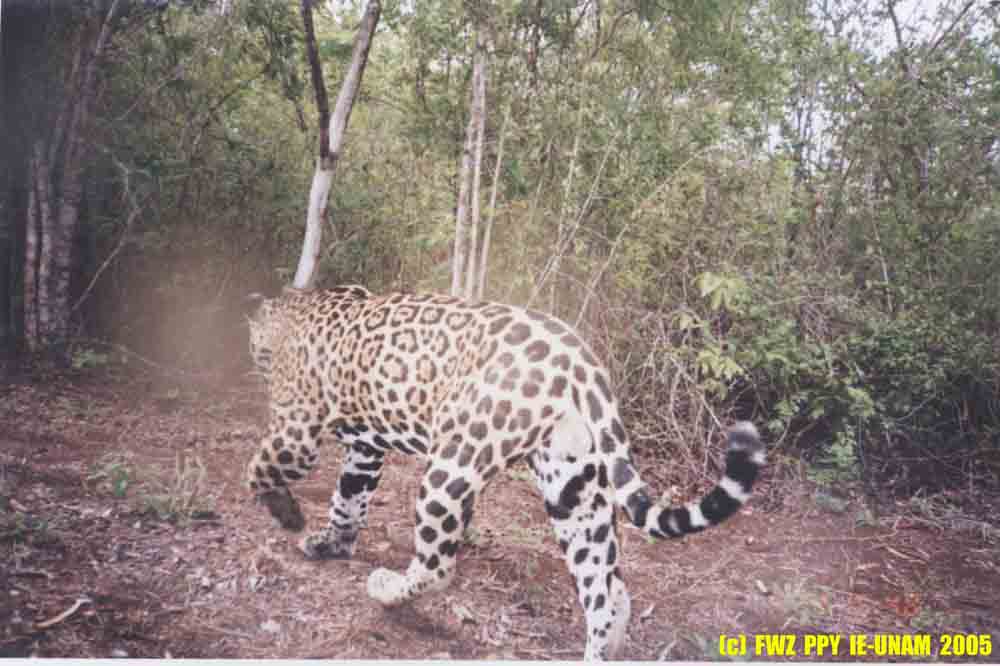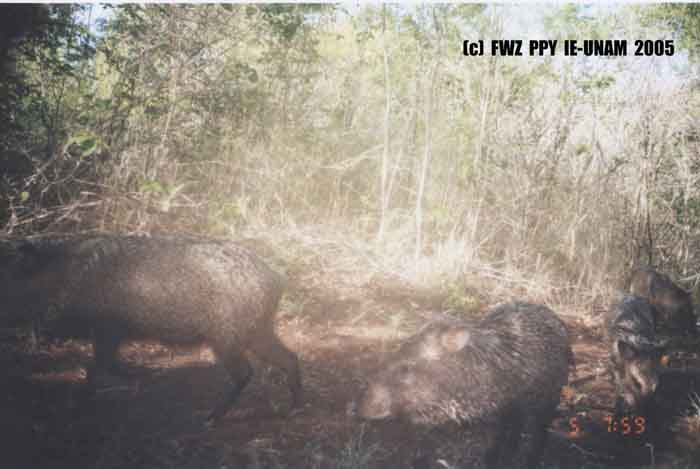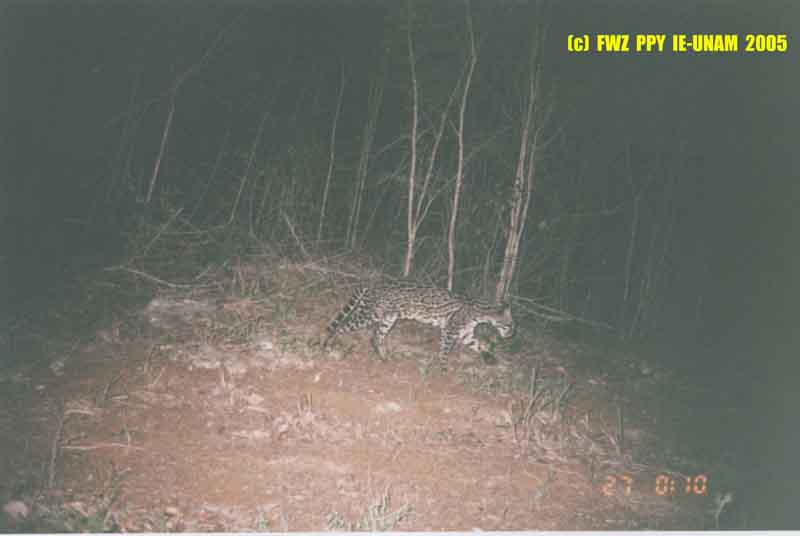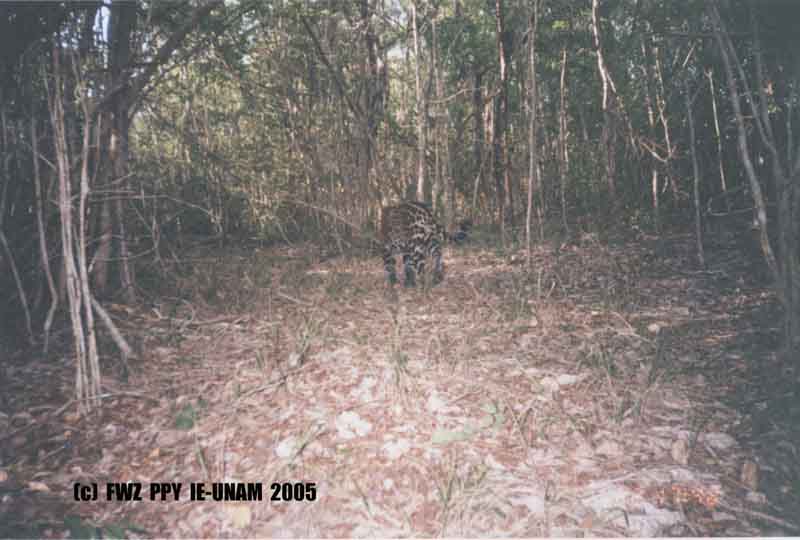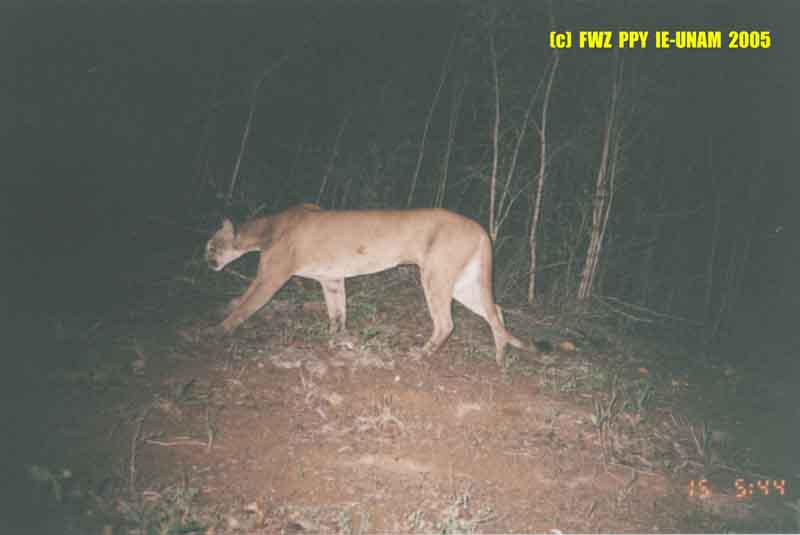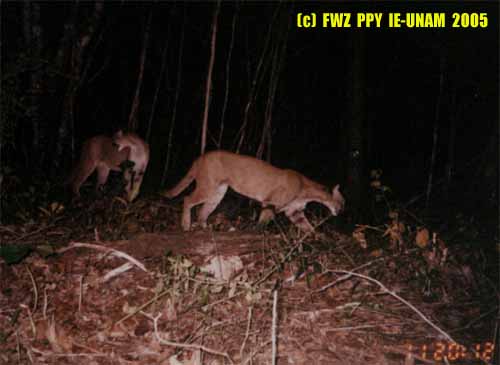
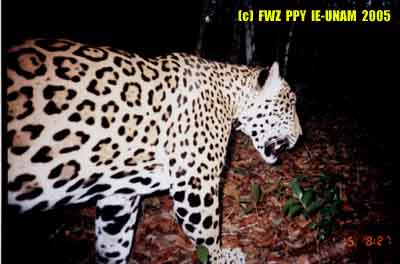
Surprisingly,
two subadult pumas (Puma concolor) were photographed together
on May 11. Repeated puma photographs through the season often seemed to
be of one or the other of these two.
The
first jaguar (Panthera onca) to be photographed in 2005! This
cat was also our first in 2004, and the most frequently "captured"
jaguar in the study thus far - racking up a tally of more than half of
all jaguar pictures taken.
